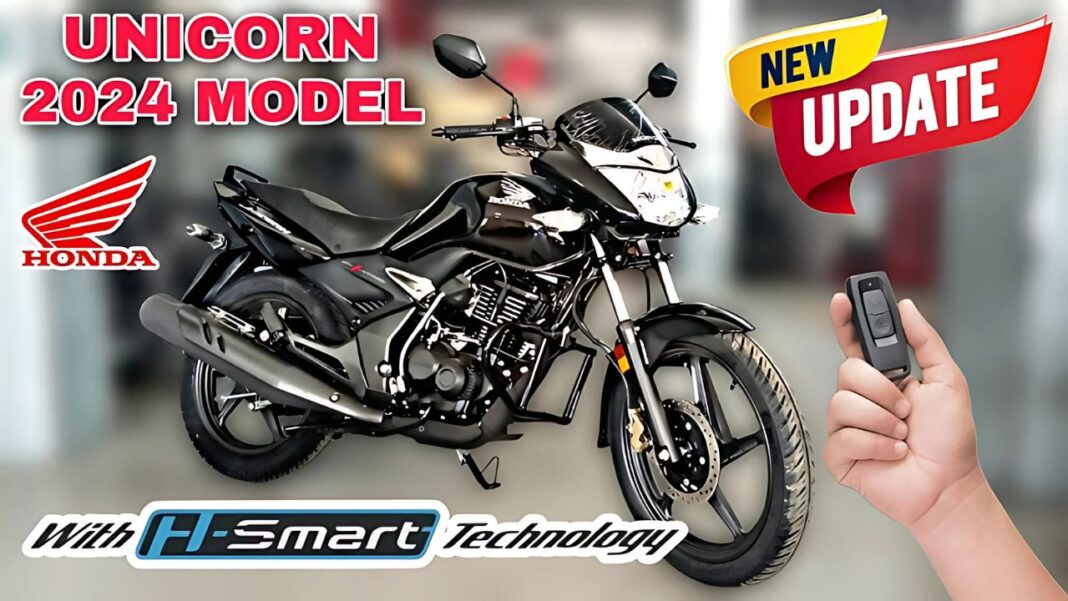Honda Unicorn: In the vibrant tapestry of India’s two-wheeler market, the Honda Unicorn stands as an icon of reliability and performance. Since its launch in 2004, this motorcycle has carved a niche for itself and has become synonymous with reliable commuting. As we enter 2024, Unicorn continues to evolve, adapting to the changing needs of Indian riders while staying true to its core values.
journey of two decades
The story of Honda Unicorn began at a time when India’s motorcycle market was at the peak of revolution. Honda Motorcycle & Scooter India (HMSI) introduced the Unicorn as its first motorcycle in the country, setting a new benchmark for the 150cc segment. Fast forward 20 years, the unicorn has not only survived but thrived, navigating market storms and evolving consumer preferences.
2024 Lineup: Tradition meets modernity
HMSI recently unveiled its 2024 Unicorn lineup, showcasing a perfect blend of the model’s traditional strengths and modern innovations:
- unicorn:The classic model, now with advanced ergonomics and better fuel efficiency.
- Unicorn CBS:Features combined braking system for better safety.
- unicorn x: A premium version with advanced features targeting tech-savvy riders.
Each variant caters to different rider preferences, from no-frills commuters to those seeking a touch of luxury in their daily rides.
technological advancements
The 2024 Unicorn models come equipped with several notable improvements:
- Programmed Fuel Injection (PGM-FI):Offering better fuel economy and lower emissions.
- led lighting: Providing better visibility and contemporary look.
- digital-analog instrument console: Providing essential information with both classic and modern appeal.
- engine stop switch: A simple but effective feature for urban stop-and-go traffic.
These enhancements, while seemingly incremental, represent HMSI’s commitment to continuous improvement and user-centered design.
Economic impact and market position
The consistent performance of Honda Unicorn in the market has had a significant impact on the economy of India. Its production supports thousands of jobs through HMSI’s manufacturing facilities and extensive network of suppliers and dealers across the country.
In the competitive 150-160cc segment, Unicorn has maintained a strong position, often featuring in the top three best-selling models. Its reputation for low maintenance costs and high resale value makes it a favorite among practical buyers, contributing to its enduring popularity.
environmental considerations
As India grapples with air quality issues, especially in urban centres, HMSI has ensured that Unicorn remains ahead of emission norms. The 2024 models conform to the stringent BS6 Stage 2 emissions standards, demonstrating Honda’s commitment to environmental responsibility.
Rumors have been rife about a possible hybrid or electric version of the Unicorn, although HMSI has remained tight-lipped about such a development. If true, it could mark a significant shift in the commuter motorcycle segment, in line with India’s push towards clean mobility solutions.
Market competition and future outlook
The 150-160cc segment in India is extremely competitive, with models like Bajaj Pulsar, TVS Apache and Yamaha FZ competing for market share. The unicorn’s main strength in this battle is its reputation for reliability and HMSI’s strong after-sales service network.
Industry analysts predict that although Unicorn will remain a strong player, it may face increasing pressure from feature-rich competitors and the growing trend towards premium 200-250 cc motorcycles. HMSI’s challenge will be to keep the unicorns relevant as well as potentially expand their offerings into higher segments.
cultural significance
Over the years, the Honda Unicorn has become much more than just a motorcycle; It is a cultural symbol in India. It is the riding choice of many middle class professionals, small business owners and even as a family vehicle in small towns and rural areas. The sight of a Unicorn loaded with a family of four is not uncommon on Indian roads, which is a testament to the bike’s versatility and the ingenuity of its riders.
consumer experience
“I have been riding my unicorn for over a decade,” explains Amit Patel, a 38-year-old IT professional from Pune. It has been my companion through job changes, marriage and now dropping my child to school. The reliability is unmatched.”
“Unicorn was my first bike when I started working,” says Lakshmi Devi, a 45-year-old teacher from Chennai. Now, 15 years later, I still prefer it over any other option on the market. It’s comfortable, fuel-efficient and has never given me any problems.”
the way forward
As we look to the future, Honda Unicorn faces both challenges and opportunities. The shift towards electric mobility, changing urban landscapes and changing consumer preferences will all play a role in shaping its future iterations.
HMSI has indicated plans to introduce more tech-oriented features in future models, possibly including smartphone connectivity and navigation assistance. However, the company is careful not to stray too far from the Unicorn’s core identity as a reliable, no-nonsense traveler.
conclusion
The journey of Honda Unicorn in India is a testament to the power of consistency, reliability and adaptability. In a market known for its fickleness, the unicorn remains a steady presence, evolving just enough to remain relevant while retaining the core features that made it successful.
As India’s automotive landscape continues to change, the Unicorn stands as a bridge between tradition and modernity. It represents not only a mode of transportation but also a philosophy of dependable mobility that resonates with millions of Indians.
Be it navigating crowded city streets or traveling on open highways, Honda Unicorn continues to be a reliable companion for riders across India. Entering its third decade, this iconic motorcycle shows no signs of slowing down, promising to remain an integral part of India’s two-wheeler story for years to come.









